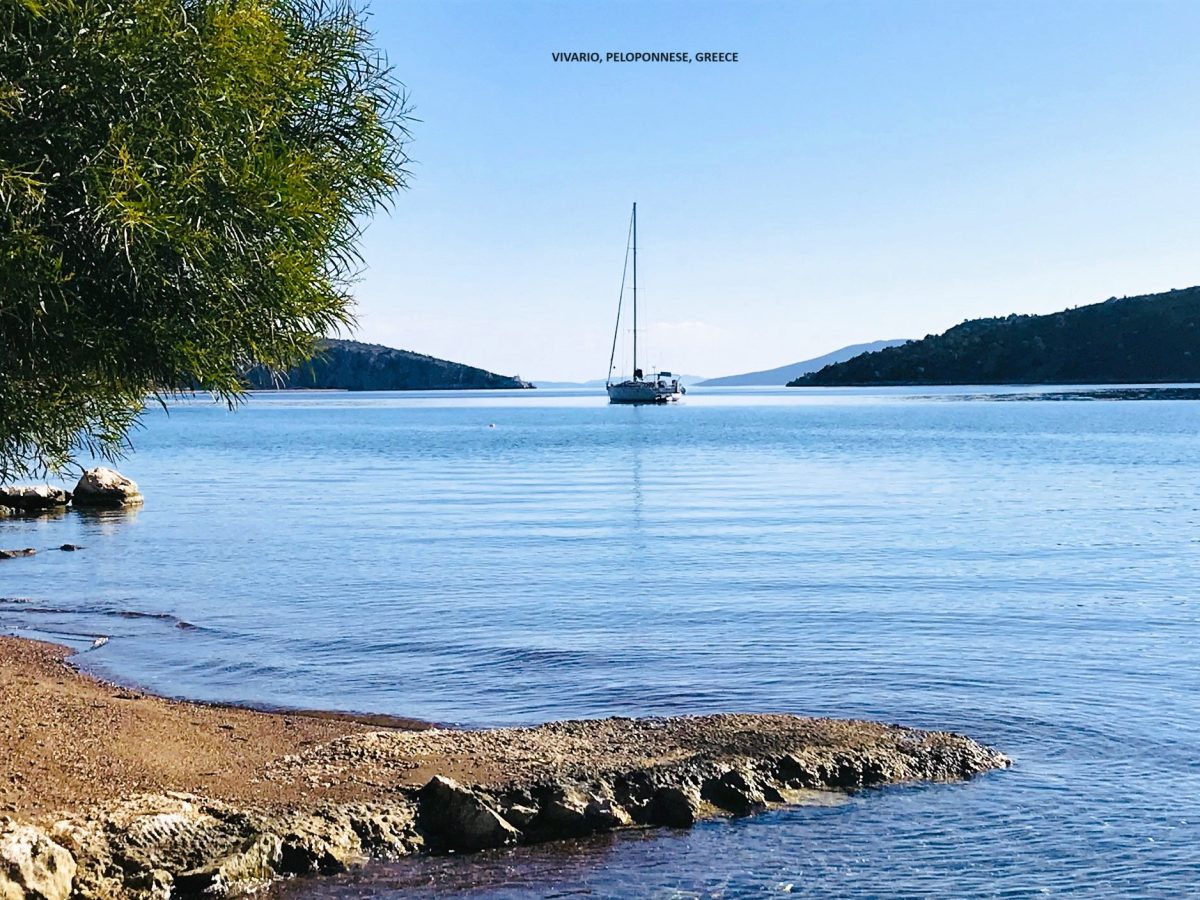And so we made our way to Aragon and the small mountain village of Ainsa, in the north of Huesca Province. Having not seen very much of Aragon during previous tours (just Alquezar, Anso and Valfarta) we thought to spend a few days in the Region before moving on to La Rioja and Castilla y Leon.
Our route took us via the Embalse de Mediano (Mediano Reservoir). The village of Mediano was completely submerged in 1969 when General Franco authorised the creation of a reservoir in the area. The inhabitants had to leave their homes as the flood started (the reservoir was opened without warning) and then watch them disappear below the waters. This story very much reminds me of Riano over in Castilla y Leon which we visited in 2021.
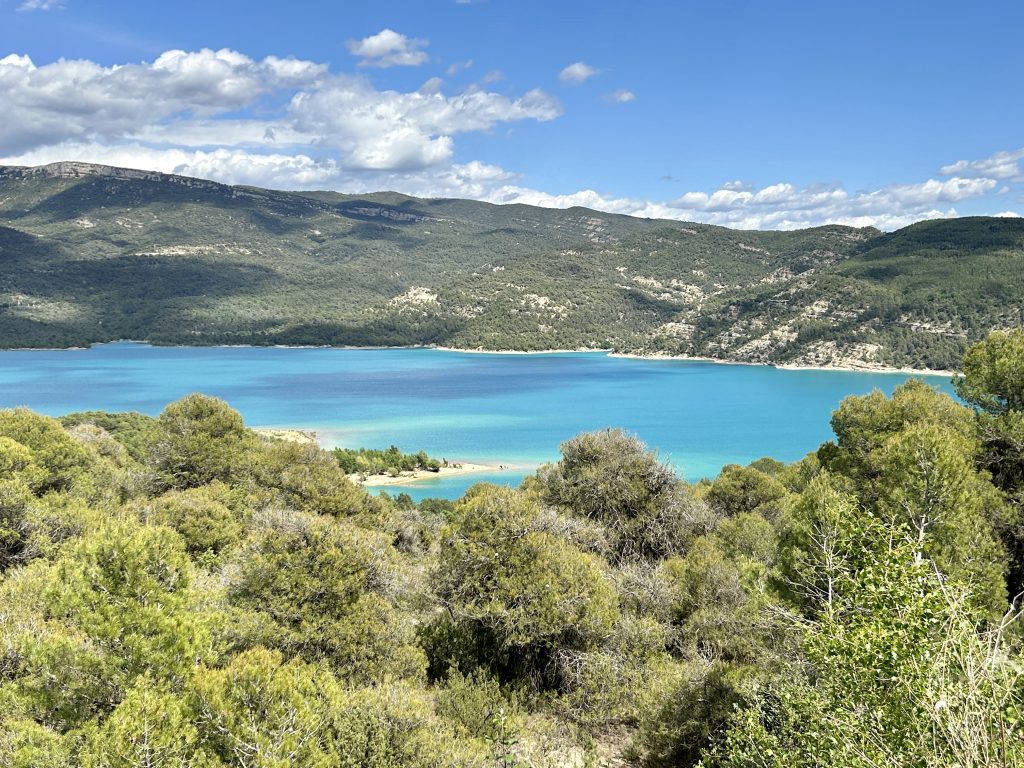

The turqouise of the reservoir water was beautiful. The picture of the Mediano Church (great photo) is not one of mine. This was taken when the reservoir was much depleted by drought. Ordinarily only the belltower of the church is visible.
The village of Ainsa (it is a small town really with just over 2,000 inhabitants) is located at the northern end of the Mediano Reservoir at the confluence of the Rivers Cinca and the Ara. It is close to three National Parks, the Ordesa y Monte Perdido, the Sierra y Canones de Guara and the Posets-Maladeta and in a great hillwalking area. I recently read about an interesting one day hike which takes in Ainsa and two other local villages, Torla Ordesa and Broto, and passes under a fairly large waterfall too.
Our campsite was within easy walking distance of Ainsa and after parking the Van and ensuring Vanya and the dogs were comfortable I went off on an ‘Explore’ making my way over the bridge across the River Cinca and into the more modern commercial part of the town before turning right onto the Avenida Pirenaica and then up the hill towards the old town.
From the bridge there are some fine views north towards the Pyrenees but I was more interested in seeing the medieval part of Ainsa and as I climbed the hill up into old town, it was the local hill, Pena Montenesa, which dominated all.
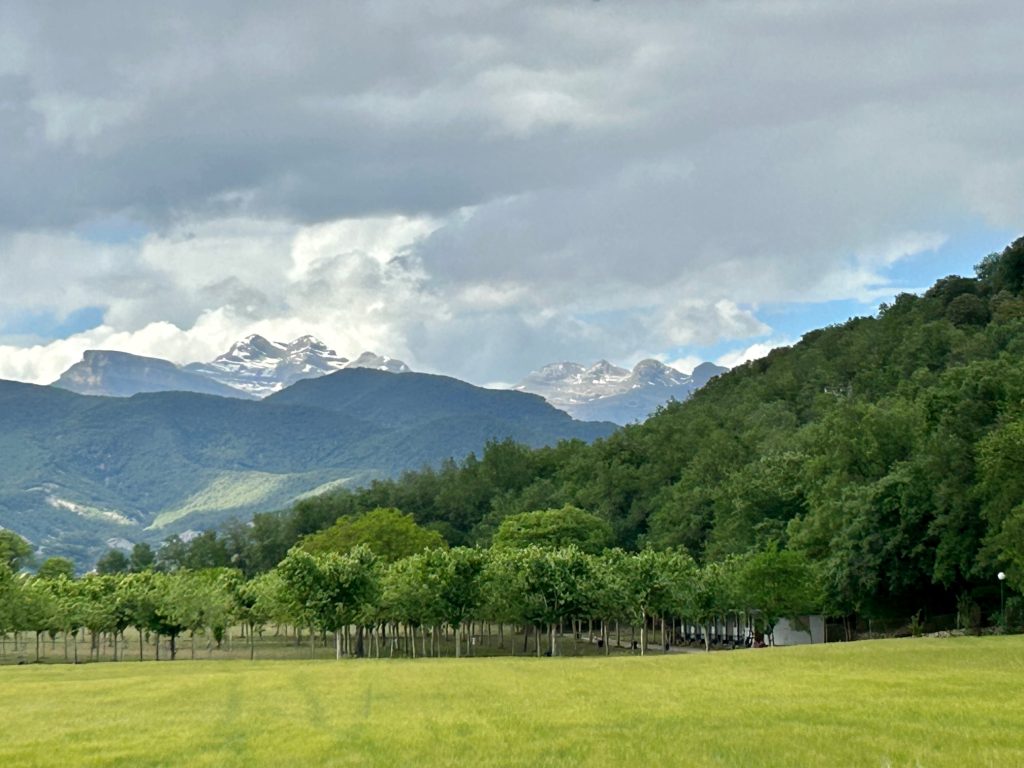
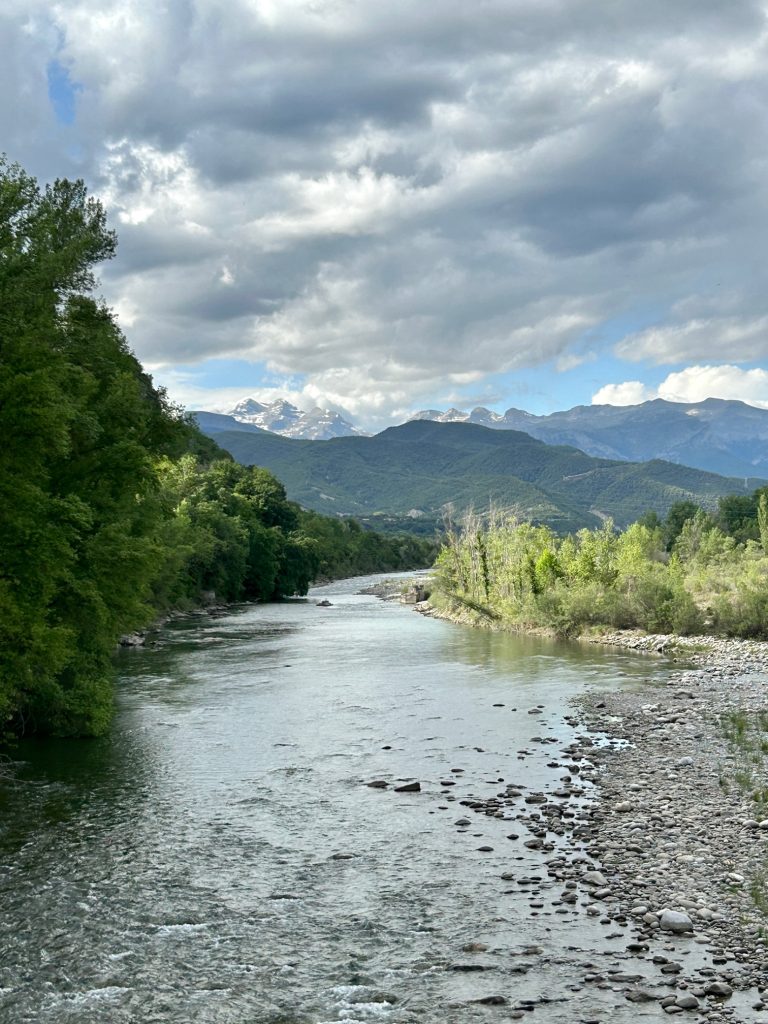
The first photo of the distant Pyrenees was taken from where the Van was parked. The other photo was from the bridge over the River Cinca. The tallest mountain in the photo (on the extreme left) is Mount Cilindro which at 3,325 metres is one of the tallest in the Pyrenees, just 79 metres lower than Mount Aneto.
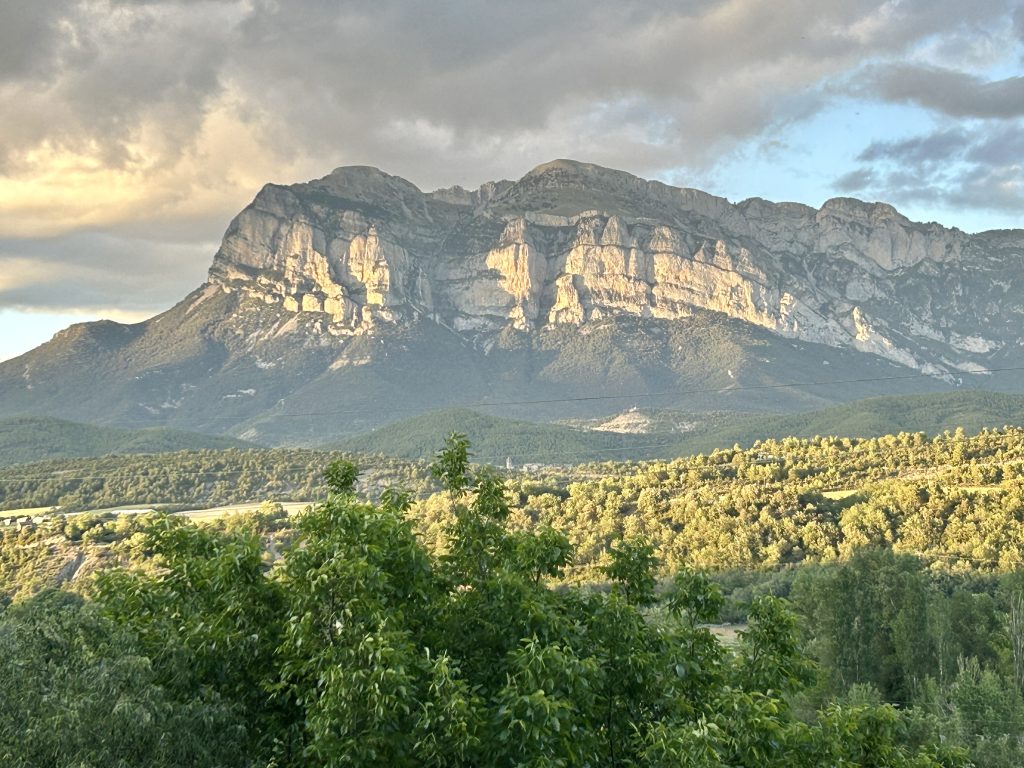
Pena Montenesa, 2,295 metres high, is much closer and dominates the village.
It is the beauty of the old town that helped Ainsa gain admittance to Los Pueblos mas Bonitos de Espana – the list of ‘Spain’s Most Beautiful Villages’. The old town’s shape is not unlike that of Dozza, another hilltop ‘village’ we visited in Italy three years ago – it takes the form of a spindle; stretching the whole length of the hill and with two tapering ends. Ainsa’s main gate is at the southern end of the hill and a 12th century castle stands at the northern end. Two narrow cobbled streets of hewn uneven stone houses and shops (Calle Mayor and Calle de Santa Cruz) run inside castle walls along each side of the village from the south gate northwards to a large square (the Plaza Mayor) which in turn leads to the castle entrance.
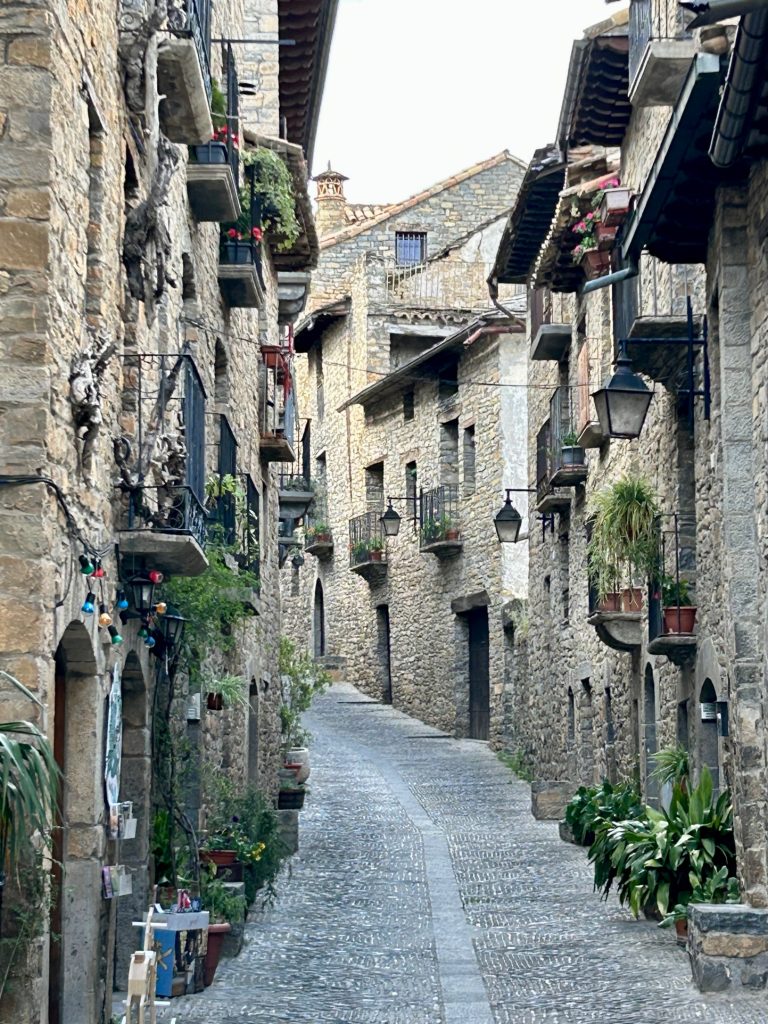

Left: Heading north along Calle de Santa Cruz towards the castle. Right: Heading south along Calle Mayor towards the south gate.
I entered the old town via the eastern gate. Three of the existing five gates into the town date back to the 11th/12th century and the eastern gate is one of them. The view from this particular gate across to the Pena Montenesa is something else.
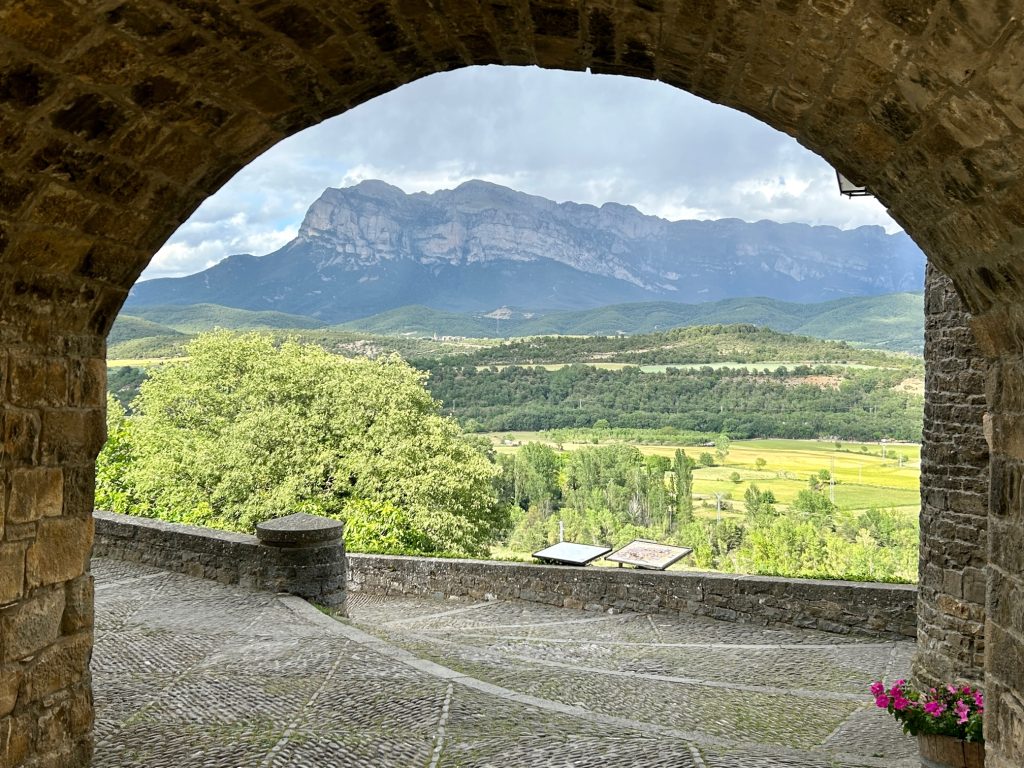
Pena Montenesa as seen through the eastern gate to the old town.


Two more gates into the old town. The gate on the left is the south gate . The gate on the right is the entrance to the castle and the photo shows the view south across Plaza Mayor to the 11th century Parish Church of Santa Maria.
Turning right on to Calle de Santa Cruz, after entering the old town via the Eastern Gate, the first significant building to be encountered is the Parish Church of Santa Maria which sits at the southern end of the Plaza Mayor. Plaza Mayor is large cobbled market square surrounded by medieval arcaded buildings and it was this square that helped put Ainsa on the map after it was declared a National Monument in 1965. Santa Maria is an 11th century church built in the Romanesque style on the site of an old Moorish fortress as part of a christian defensive line to protect the village against the Moors.
At the northern end of the Plaza Mayor is the old castle. During the 17th century and at the expense of well over 100 private dwellings, the castle was extended into the citadel it is now. Of course much of the citadel fell to ruin when the old town was largely vacated during the 19th and 20th centuries but it’s footprint remains and it is possible to walk most of it’s ramparts which afford splendid views both towards the Pyrenees and back over the town.
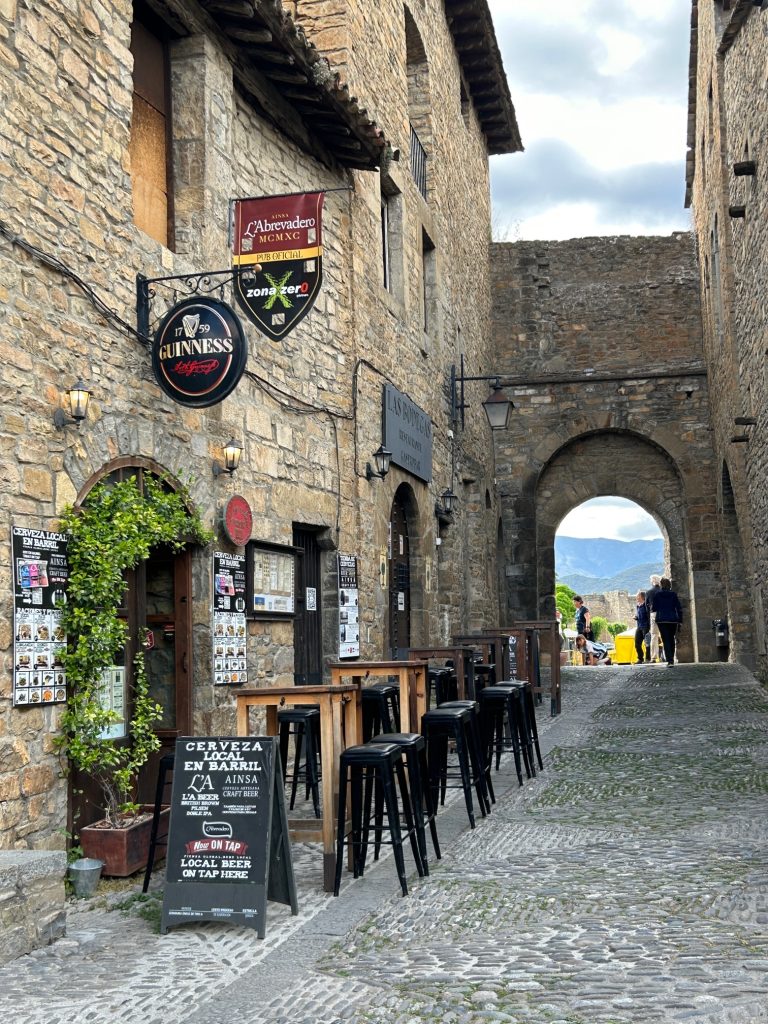
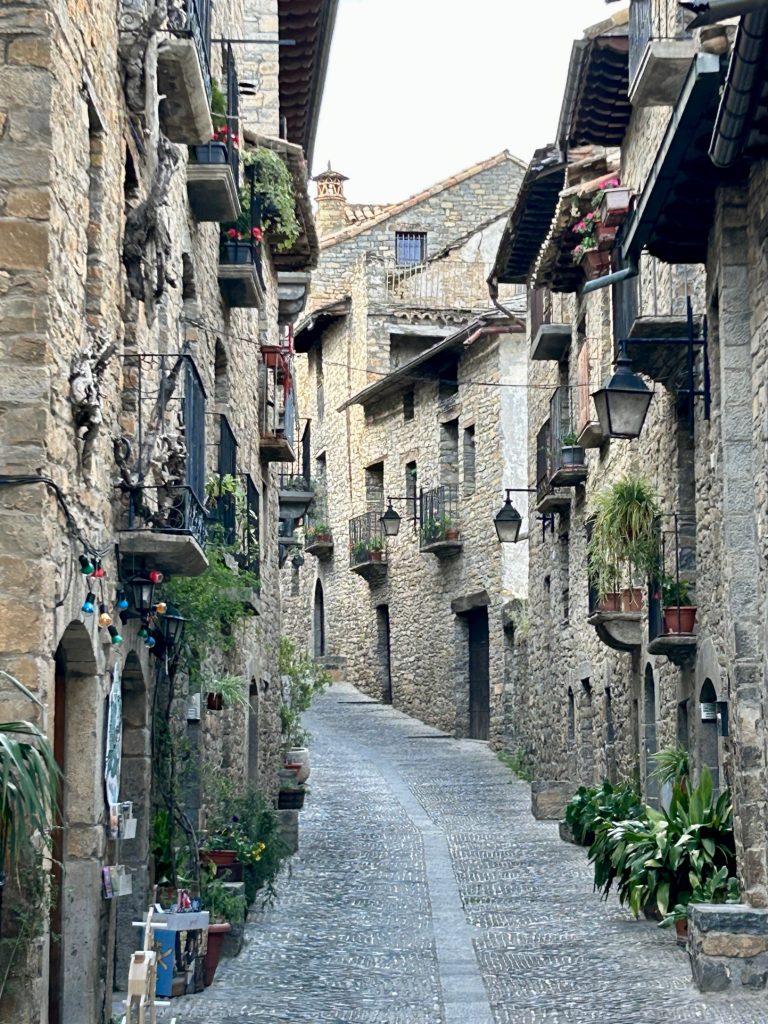
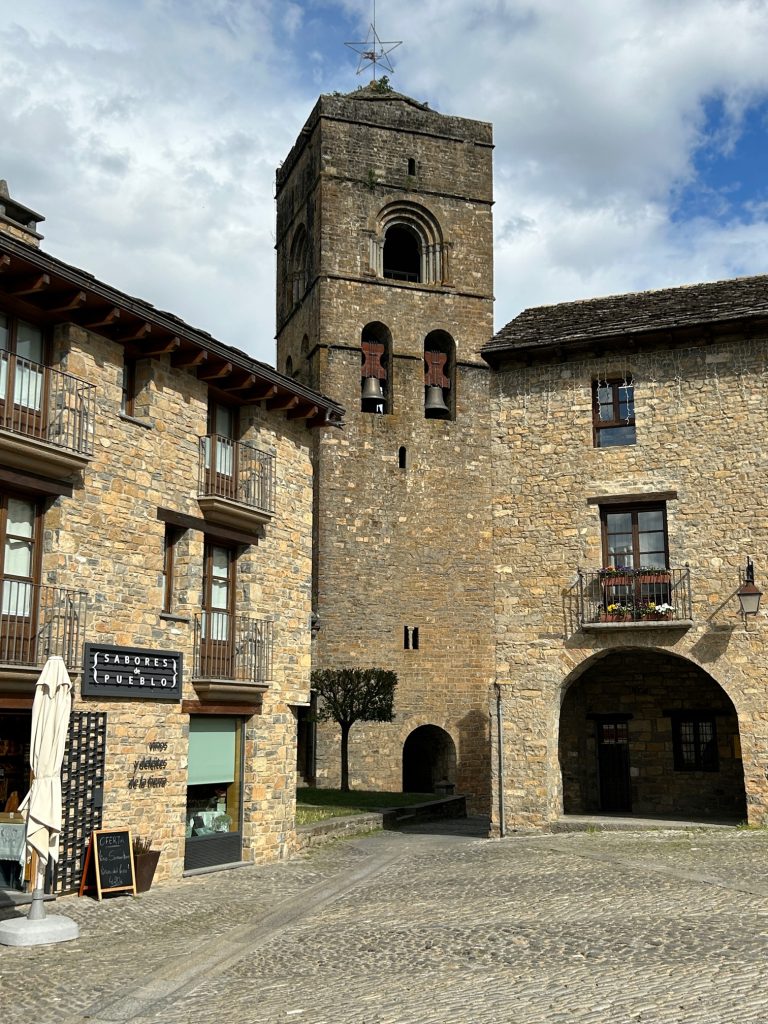
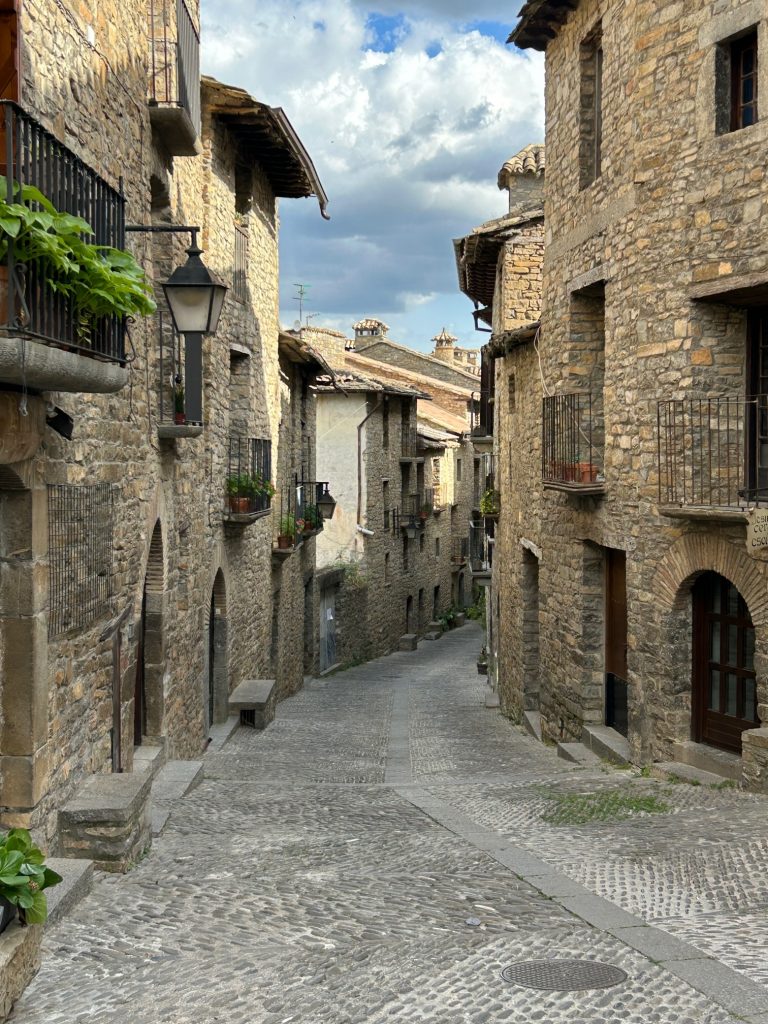
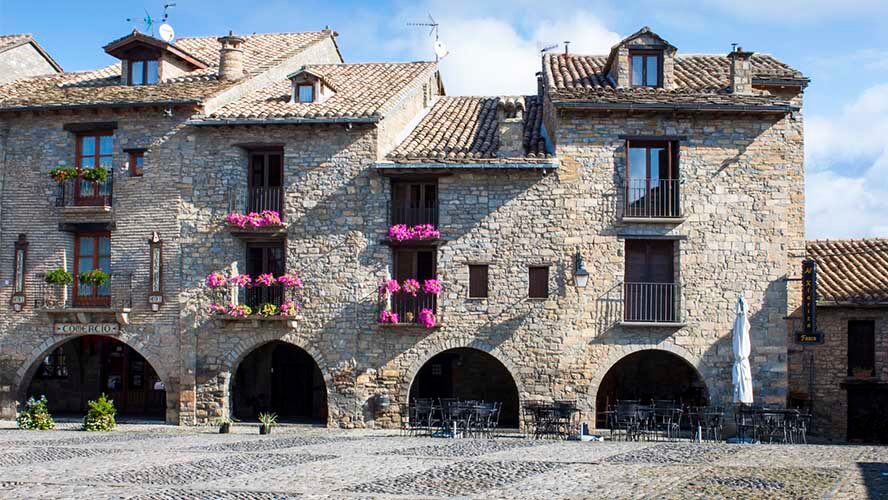
One of the older buildings on the Plaza Mayor
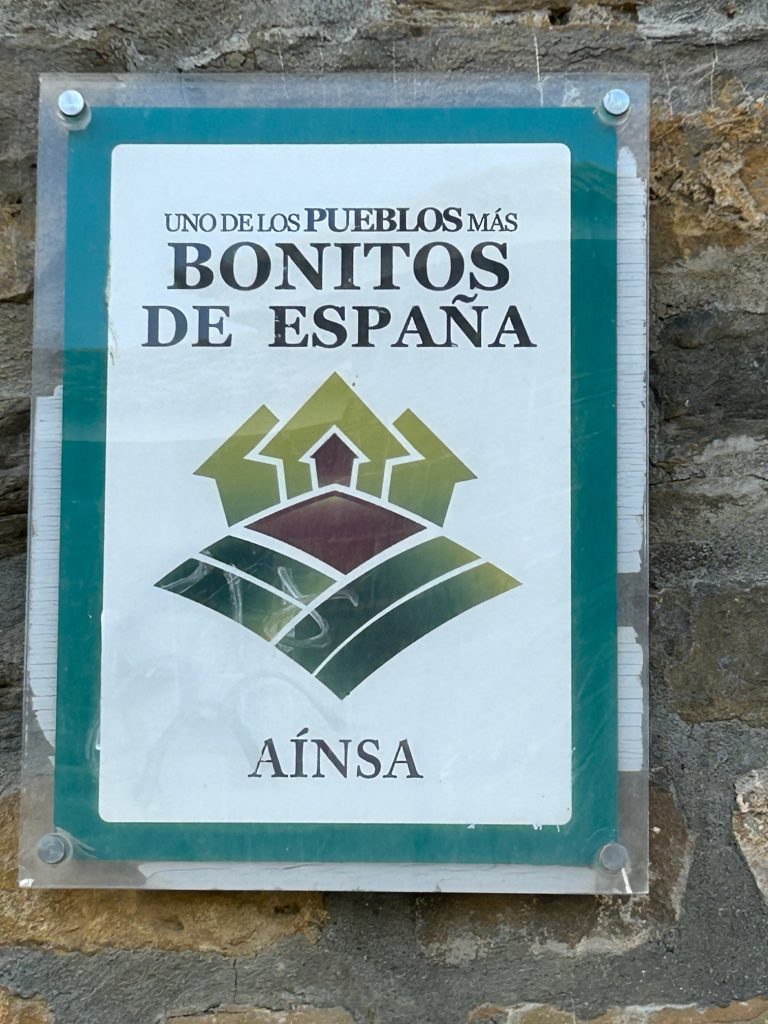
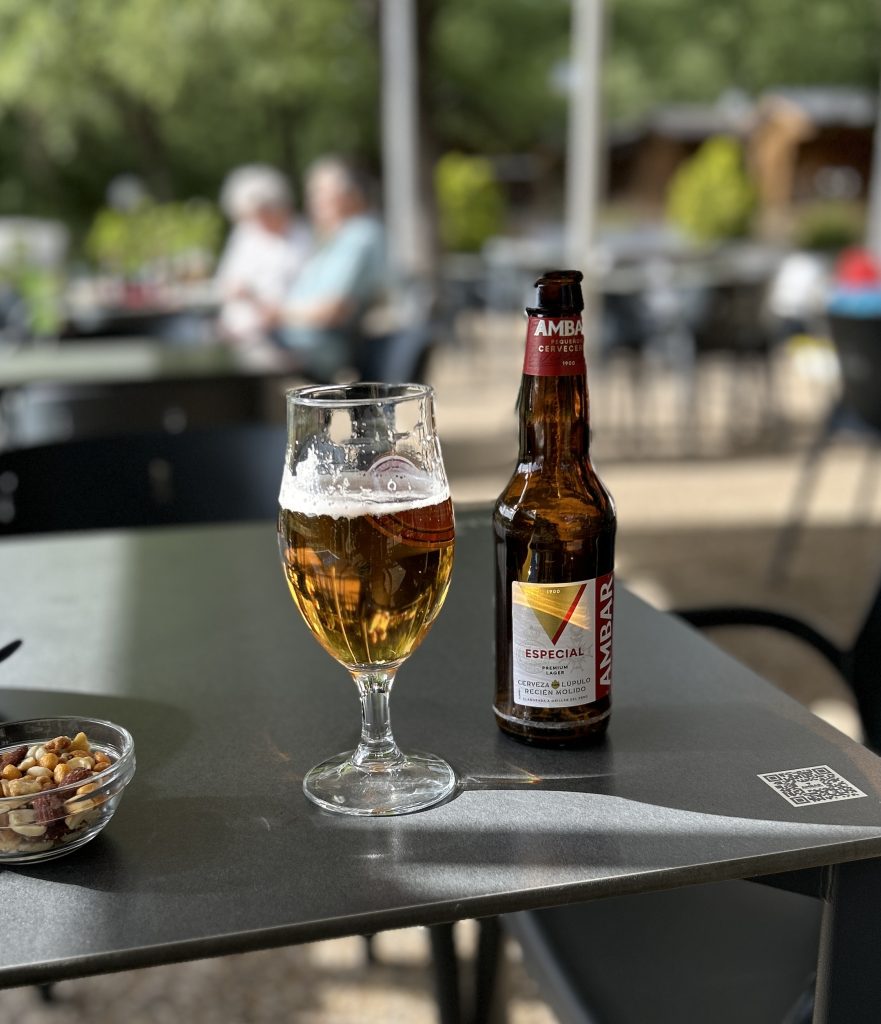
I returned to the Plaza Mayor later in the day with Vanya and we enjoyed a couple of beers and wines outside one of the cafe bars before taking a last saunter around the Old Town as darkness descended.

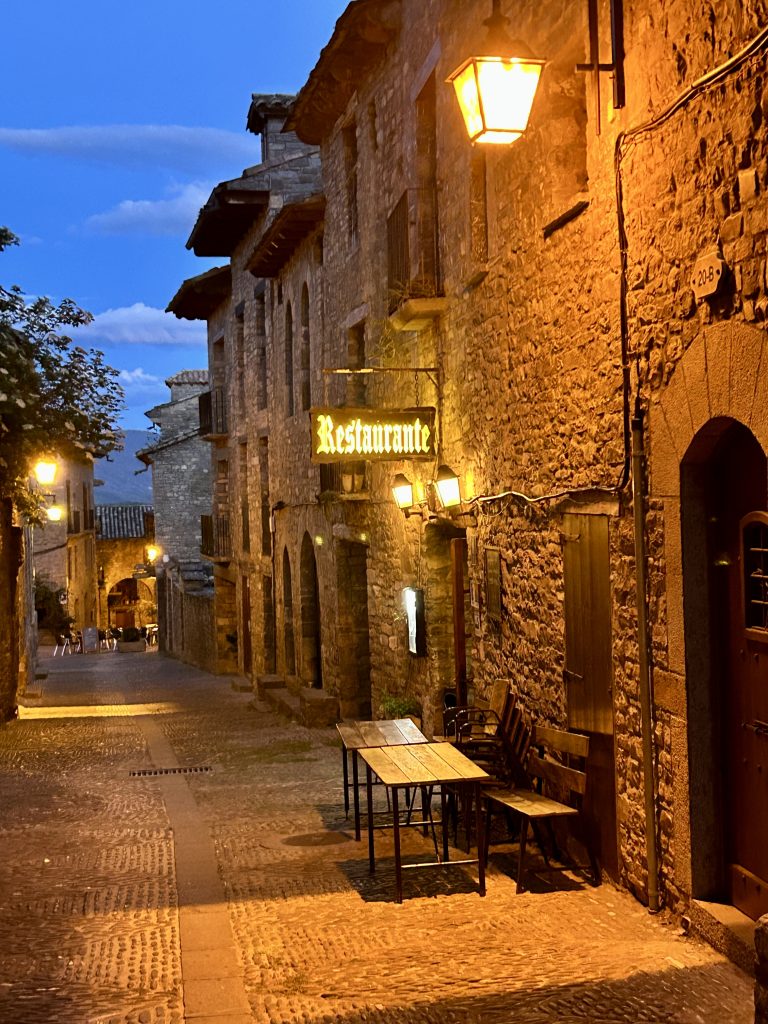
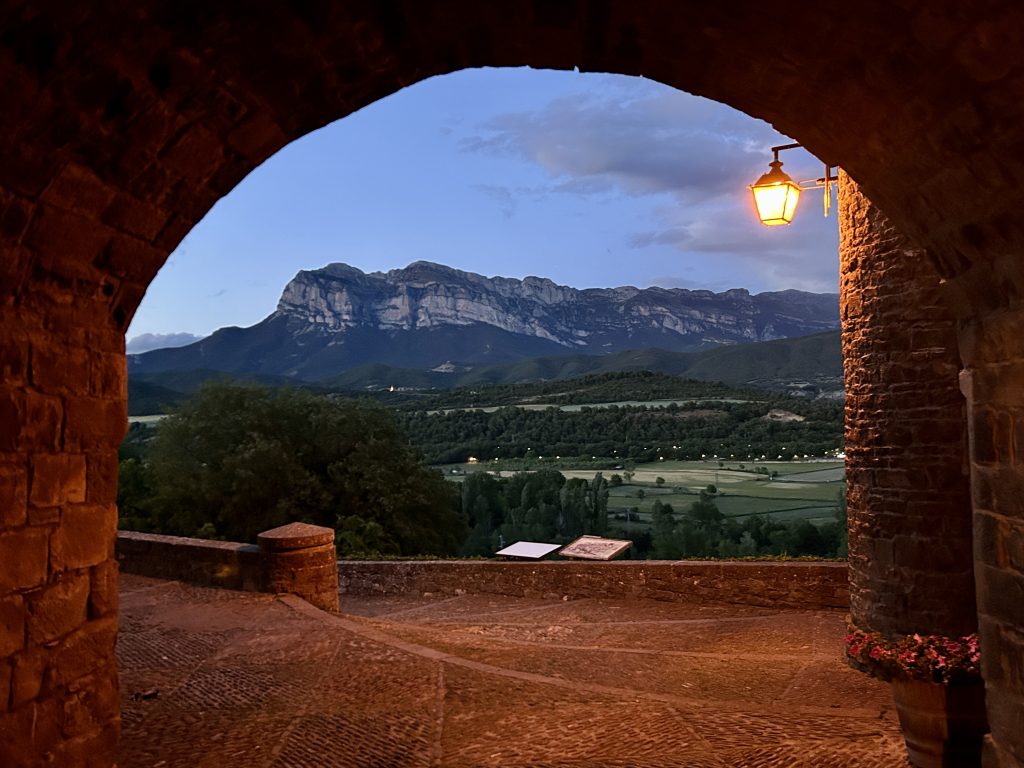
The view from the Eastern Gate as we left was every bit as good as earlier in the day.

